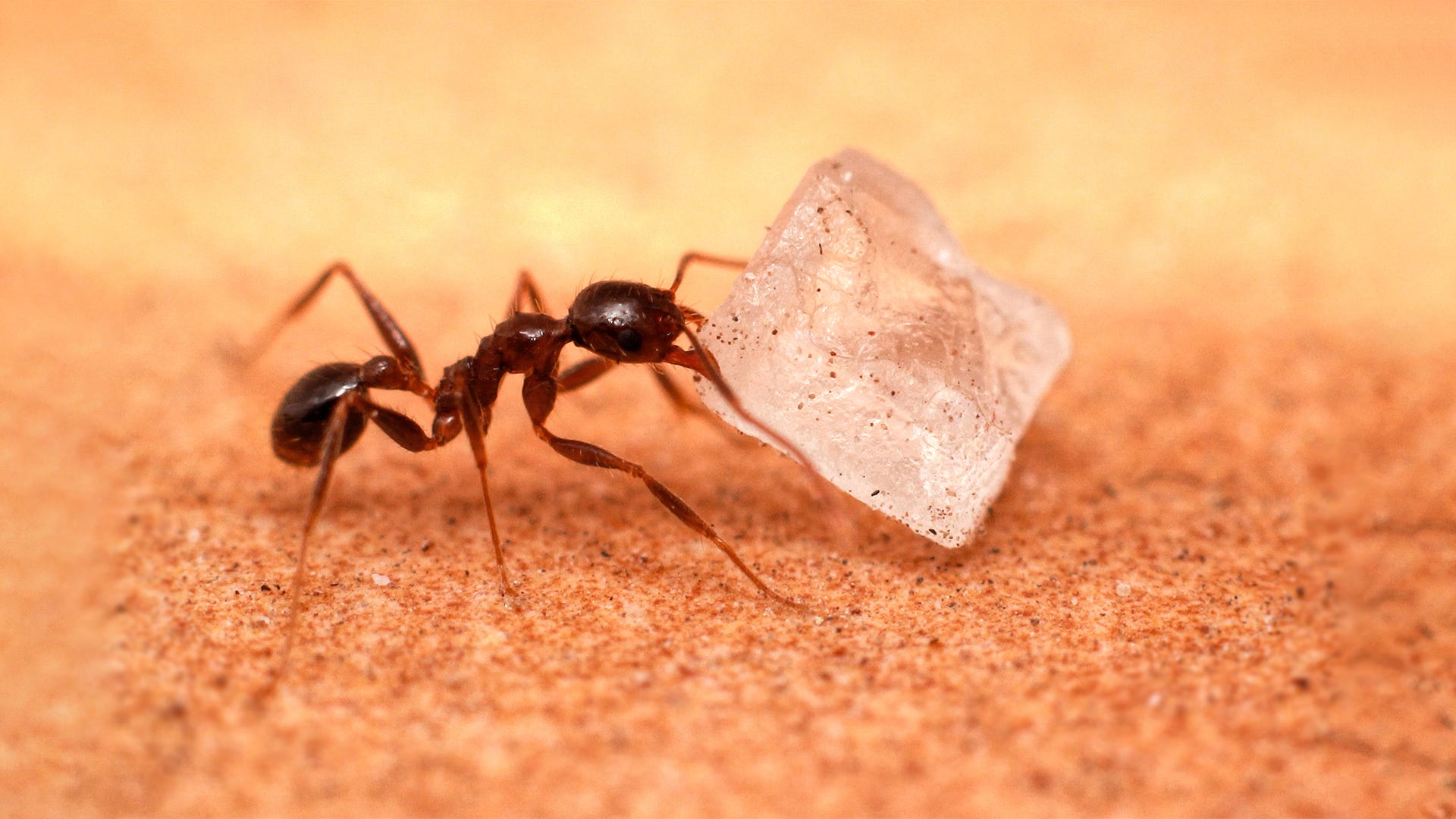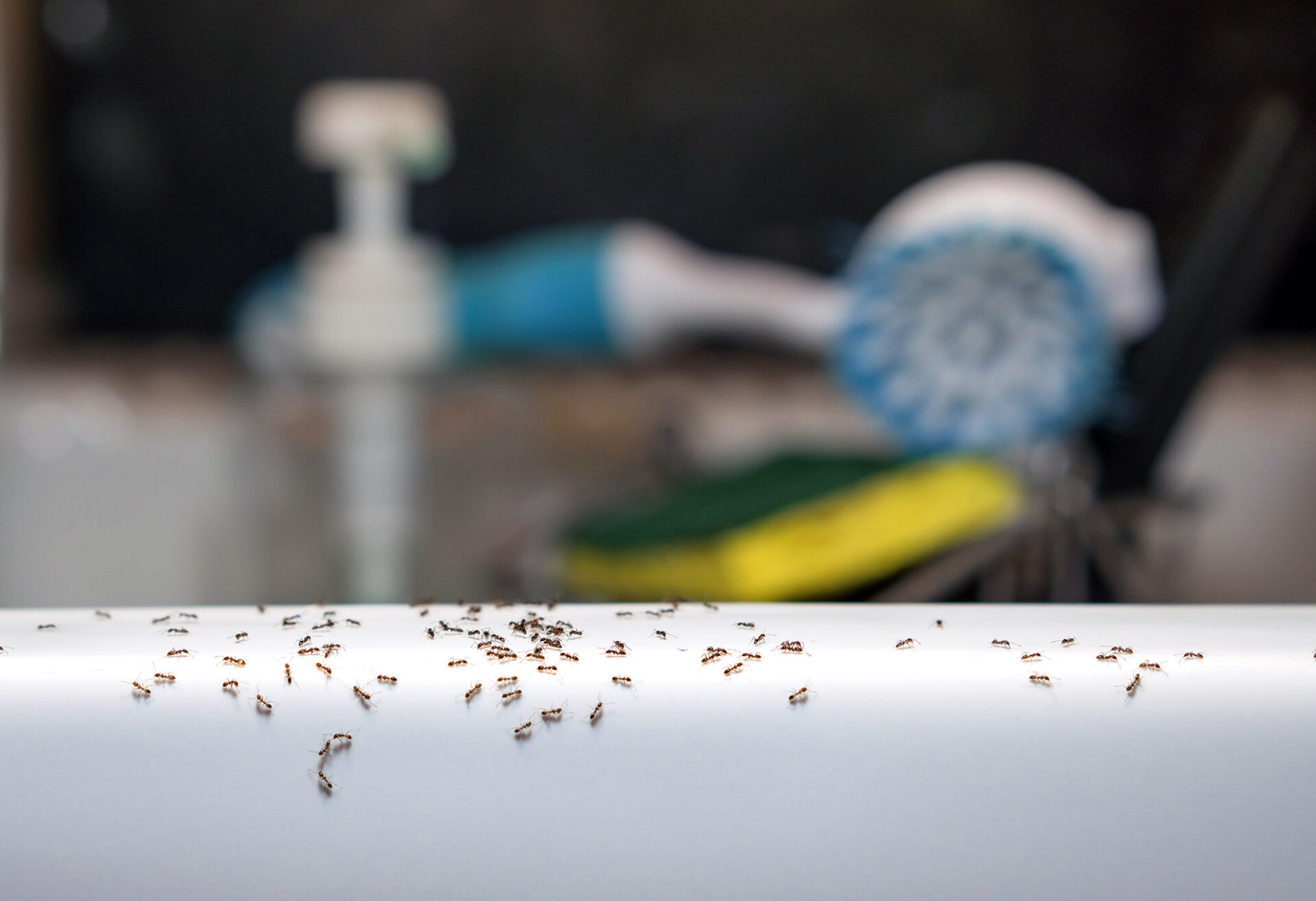Black Ant Biology and Behavior

Black ants, commonly found in bathrooms, are social insects that live in colonies. They are highly organized and have specific roles within their colonies. Understanding their biology and behavior can help you better control their presence in your bathroom.
Life Cycle of Black Ants, Black ants in bathroom
Black ants undergo a complete metamorphosis, which involves four distinct stages: egg, larva, pupa, and adult.
- Eggs: The queen ant lays tiny, white eggs that are usually clustered together.
- Larvae: After hatching, the eggs develop into worm-like larvae that are fed and cared for by worker ants.
- Pupae: Once the larvae reach a certain size, they spin a cocoon and enter the pupa stage.
- Adults: After a period of development within the cocoon, adult ants emerge. The adult ants have distinct roles within the colony, such as workers, queens, and males.
Factors Attracting Black Ants to Bathrooms
Bathrooms can be attractive to black ants due to the presence of various factors:
- Food Sources: Crumbs, spilled food, and even toothpaste can attract black ants.
- Moisture: Bathrooms are often humid environments, providing ideal conditions for black ants to thrive.
- Warmth: Black ants prefer warmer temperatures, and bathrooms often have higher temperatures than other areas of the house.
Common Behaviors of Black Ants in Bathrooms
Black ants in bathrooms exhibit specific behaviors:
- Foraging Patterns: Black ants are known to follow trails, which they mark with pheromones. They will often be seen traveling in lines, searching for food.
- Nest Locations: Black ants often build their nests in hidden areas, such as under sinks, behind toilets, or in cracks in the walls.
Identifying the Source of the Infestation
:max_bytes(150000):strip_icc()/jmalovGettyImages-c438f24ca33544bab3ca2332d1fb91fe.jpg)
Locating the entry points and identifying the food sources that attract black ants in your bathroom is crucial for effective control. Once you understand where they are coming from and what they are feeding on, you can take targeted steps to eliminate the infestation.
Potential Entry Points
Black ants are remarkably small and can squeeze through tiny cracks and crevices. To identify potential entry points, you need to examine your bathroom carefully.
- Around plumbing fixtures: Look for gaps around faucets, showerheads, tubs, and sinks. Ants can easily enter through these areas, especially if there are leaks or moisture present.
- Under the bathroom door: Check the seal of your bathroom door. If it’s worn or damaged, ants can easily slip underneath.
- Cracks in walls and floors: Examine your bathroom walls and floors for any cracks or gaps. These can provide entry points for ants.
- Through ventilation: If your bathroom has an exhaust fan or ventilation system, check the vents for any openings or gaps that ants could use to enter.
- Windows and screens: Even small gaps or tears in your window screens can allow ants to enter. Ensure your windows are properly sealed and your screens are intact.
Common Food and Water Sources
Black ants are attracted to a variety of food and water sources. Identifying these sources in your bathroom can help you eliminate their attraction.
- Crumbs and spills: Even small crumbs or spills on the floor or counter can attract ants. It’s important to clean up any messes immediately.
- Pet food: If you have pets, ensure their food bowls are cleaned regularly and any spilled food is promptly removed.
- Garbage: Your bathroom trash can can be a major attraction for ants, especially if it contains food scraps or spills. It’s important to seal your trash can tightly and empty it regularly.
- Leaky pipes and faucets: Leaky pipes and faucets can provide a constant source of moisture for ants. Fix any leaks promptly to eliminate this attraction.
- Unsealed food items: Ensure all food items in your bathroom are stored in sealed containers to prevent ants from accessing them.
Areas of Infestation
To determine the extent of the infestation, you need to carefully examine your bathroom for signs of ant activity.
- Along baseboards and walls: Check for ant trails or lines of ants moving along baseboards and walls.
- Around sinks and tubs: These areas are often damp and can attract ants.
- Under cabinets and furniture: Look for ant nests or trails under cabinets and furniture.
- In cracks and crevices: Examine cracks and crevices in your bathroom floor, walls, and around fixtures for signs of ant activity.
- Around food storage areas: Check for ant trails or activity near food storage areas, such as cabinets or pantries.
Effective Black Ant Control Methods: Black Ants In Bathroom

Once you’ve identified the source of your black ant infestation, it’s time to take action to control them. There are a variety of methods you can use, from DIY solutions to professional pest control services. The best approach will depend on the severity of the infestation and your personal preferences.
DIY Black Ant Control Methods
DIY methods can be effective for small infestations or as a preventative measure. Here are some natural repellents and cleaning solutions that can help deter black ants:
- Peppermint Oil: Black ants dislike the strong scent of peppermint oil. You can dilute peppermint oil with water and spray it around areas where ants are entering your home. You can also use peppermint oil-infused cleaning products.
- Citrus: The scent of citrus fruits, such as lemons and oranges, can also repel black ants. You can wipe down surfaces with citrus-based cleaners or create a citrus spray by mixing citrus peels with water.
- Borax: Borax is a natural insecticide that can be used to kill black ants. Mix borax with sugar to create a bait that ants will find attractive. Place the bait in areas where ants are active.
- Diatomaceous Earth: Diatomaceous earth is a powdery substance made from fossilized algae. It works by dehydrating ants when they come into contact with it. Sprinkle diatomaceous earth around areas where ants are entering your home.
Black Ant Baits
Ant baits are a common and effective method for controlling black ants. They work by attracting ants to a poisoned food source. When the ants eat the bait, they carry the poison back to their colony, where it spreads and kills the entire nest.
- Liquid Baits: Liquid baits are often more effective than solid baits because they can be easily spread throughout a colony. They are typically placed in small containers or gel traps.
- Solid Baits: Solid baits are available in various forms, such as granules or pellets. They are often placed in areas where ants are active, such as near entry points or along trails.
- Granular Baits: These baits are commonly used for outdoor infestations and are available in various formulations, such as those containing borax, fipronil, or hydramethylnon. They work by providing a slow-acting poison that ants will carry back to their nests.
Black ants in bathroom – When choosing an ant bait, it is important to consider the type of ant you are trying to control and the size of the infestation. Some baits are more effective against certain species of ants. It’s also important to follow the instructions on the bait label carefully.
Using Professional Pest Control Services
For large or persistent infestations, it is best to seek professional help. Professional pest control services have the expertise and tools to effectively eliminate black ants. Here’s a step-by-step guide to using professional pest control services:
- Contact a reputable pest control company. Look for a company that is licensed and insured and has experience dealing with black ant infestations.
- Schedule an inspection. A professional pest control technician will come to your home and inspect the areas where you are seeing ants. They will also ask you about the severity of the infestation and your previous attempts at control.
- Discuss treatment options. The technician will recommend the best treatment options for your specific situation. They may suggest using baits, sprays, or other methods.
- Follow the technician’s instructions. It is important to follow the technician’s instructions carefully to ensure the treatment is effective. This may include sealing entry points, keeping your home clean, and avoiding certain activities that may attract ants.
- Monitor the results. After the treatment, monitor the areas where you were seeing ants. If you continue to see ants, contact the pest control company to discuss further action.
